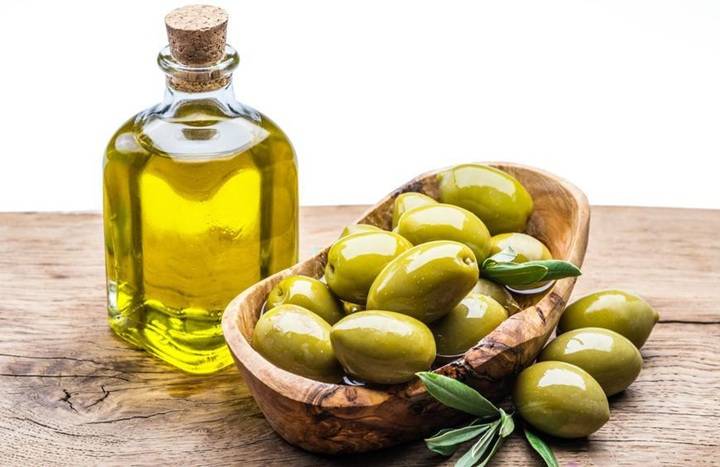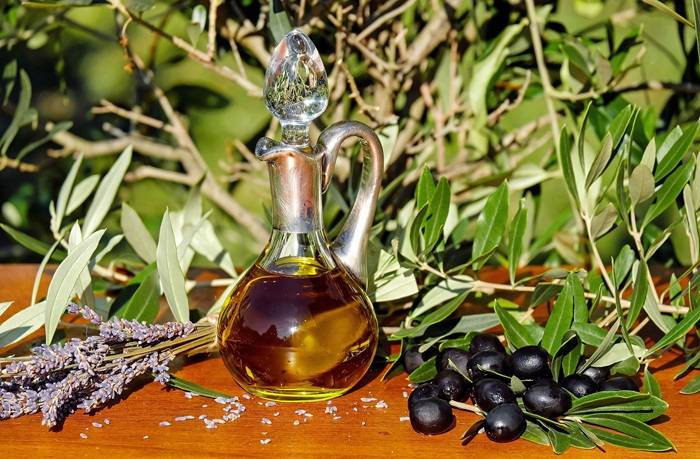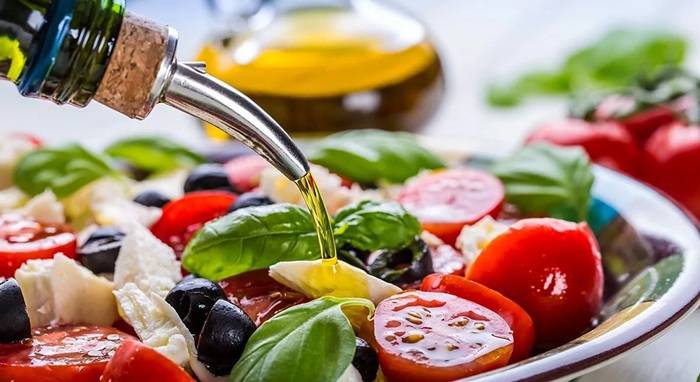
Is Olive Oil a Seed Oil? A Probe of the Reality Behind the Title
Now in the modern day era of wellbeing, the subject of cooking oil is intimidating. Avoid seed oils some will advise, others will advise eating with olive oil because it is the world’s healthiest oil it is. And so does that then create the question: is olive oil a seed oil as well?
It’s being marketed as though it’s only a matter of plant variation, but there is more to this. In this master handbook, we’ll be showing you all you’d ever want to know about olive oil origin, chemistry, comparison to actual seed oils, health impacts, culinary applications, and why it’s being confused too often when people are discussing food.
You will be informed and prepared with the information to make better decisions in your own kitchen.
The Plant Source: Where Does Olive Oil Originate?

Let’s first understand where it is being drawn out in order to understand whether olive oil is a seed oil or not. Olive oil is squeezed out of the fruit of a tree called an olive tree (Olea europaea). Olives are technically a fruit, and not a seed. The oil is pressed from the pulpy soft interior of juicy olives, and very little is removed from the pit or seed crushed within.
This is a botanical difference that has meaning. Sunflower, soybean, or canola seed oils are expressed from the seed plant. Olive oil is expressed from the entire fruit. That sits olive oil solidly in the fruit oil column, not the seed oil column.
Why the Confusion Exists
Olive oil is typically in the overall category of “seed oil” in everyday usage. Especially when discussing inflammation, quantities of omega-6, and industrial processing. “Seed oil” has been used as a catch-all of sorts for bad or over-processed oil, and it’s done a wonderful job of confusing everybody about what in the world even a seed oil is.
When you are told to “avoid seed oils,” what you are most likely told to avoid are industrial process polyunsaturated fat-laden oils not olive oil. But in translation to the common folks and non-technical vocabulary, it’s the type of easy error to make and throw olive oil in the mix.
What is Seed Oil?
Seed oil is a naturally occurring oil within a plant kernel or seed. That would include such common oils as:
- Sunflower oil
- Soybean oil
- Canola (rapeseed) oil
- Corn oil
- Safflower oil
- Cottonseed oil
- Grapeseed oil
They have a high level of the omega-6 polyunsaturated fatty acids. They are typically chemically solvent-refined, shelf-stable-processed. They are light-colored and flavored and find applications in prepared foods and fried fast foods.
Low in polyunsaturated fat and high in monounsaturated fat, cold-pressed or chemically unrefined olive oil is usually.
The Chemistry of Olive Oil: What’s in the Bottle
It is the distinctive and health-enhancing fat profile of olive oil that makes it priceless to health. Oleic acid and a monounsaturated fat that defends coronary arteries against disease are olive oil’s primary fat.
Its usual composition is:
- 70 to 80% monounsaturated fat
- Around 10% polyunsaturated fat
- Around 10 to 15% saturated fat
- Phenolic compounds, antioxidants, and vitamin
Olive oil is highly resistant to oxidation. It is safe for raw use and medium-temperature cooking. Olive oil differs from most seed oils in that it is not damaged and forms unhealthy compounds when heated to food preparation temperatures of normal conditions.
How It Stacks Up Compared to Traditional Seed Oils
Let us contrast olive oil with three of the most common seed oils. Which are: canola, soybean, and sunflower oil.
- Canola oil: around 60% monounsaturated, 30% polyunsaturated. It will most likely be industrially processed
- Soybean oil: too high in omega-6s (around 50%), medium in omega-3. It is usually industrially processed
- Sunflower oil: very high in omega-6 (up to 70%), very low in omega-3. It is almost always processed
Olive oil is not only unique as a fruit oil, but also in having a completely different nutritional composition. It’s extremely low in omega-6, and therefore less likely to be a component of the omega-6/omega-3 imbalance of the Western diet.
Also Read: When Calls the Heart Season 11
Healthy Benefits of Olive Oil
Olive oil is not only unique from seed oils in chemistry and origin. It’s also loaded with healthy benefits.
- Reduces risk of cardiovascular disease by lowering LDL (bad) cholesterol. Also increasing HDL (good) cholesterol
- Reduces inflammation due to polyphenol and antioxidant effect
- Improves brain function and health
- Increases resistance to type 2 diabetes and metabolic syndrome
- Reported to be anti-cancer in certain studies
Apart from extra-virgin olive oil, no other oilseed can do this much. On that alone, a common long-life and heart regimen known as the Mediterranean diet has been built around olive oil.
Culinary Use and Smoke Points
One of the more common olive oil myths is that it’s got a lower smoke point than seed oils and therefore is “not good for cooking.” It’s a half-truth. Olive oil has a smoke point of approximately 375°F (190°C). Which is sufficient for most sautéing, roasting, and light frying.
Good-grade olive oil (not extra-virgin) is a smoke point as close to 465°F (240°C) as humanly possible. It is higher than most seed oils.
Most importantly, the antioxidants in olive oil shield it against oxidative rancidness more than polyunsaturated oil-based oils even with low heat that promotes oxidation.
Why There Is an “Avoid Seed Oils” Movement
We are becoming increasingly concerned about seed oil overconsumption since they simply have too much omega-6 and industrial processing. The omega-6 to omega-3 ratio of the modern diet is grotesquely skewed, too many times 20:1, or worse. This imbalance has been linked with high inflammation, cardiovascular disease, and autoimmune disease.
Seed oils become oxidized. However, when exposed to heat, burning, or oxygenation and release chemicals. Like aldehydes and lipid peroxides. These are presumed harmful, especially when ingested in an every-day amount.
Olive oil, being monounsaturated in structure and full of antioxidants, eschews most of these. To put it on par with seed oils shows no respect for its own.
Olive Oil Misbranding and Deception
Only a few olive oils are alike, however. Olive oil dilution through its mixing with lower-priced seed oil to maintain price competitiveness is a practice for some companies. Even diluted olive oils like these can be labeled “olive oil” or even “extra-virgin” in relaxed regulation environments.
To avoid watered-down or diluted olive oils:
- Buy known brands
- Inspect date of harvest and origin
- Buy oils in dark glass bottles
- Buy third-party certification if it is available
Misidentified oils are also responsible, at least in part, for the common impression that olive oil is similar to a seed oil, especially when blended with canola or soybean oil.
Food Utilization: When to Use Olive Oil and When Not To
It is perfectly suited for:
- Drizzling over cooked pasta or vegetables
- Vinaigrettes and salad dressings
- Cooking over light to medium heat (roasting, pan-frying, sauteing)
- As an after-taste flavor sprinkled onto soups or as bread dipping oil
Other oils are appropriate for:
- Deep frying (when smoke point is so critical)
- Baked items that need to be flavor-free
- Ethnic foods where sesame, peanut, or mustard oil are traditional
For everyday cooking that gets completed within a day, however, olive oil is a reasonable choice for the synergy of its nutrition, flavor, and shelf life.
Label Watch: Olive Oil vs Blends
Steer clear of “Mediterranean oil blend” or “olive oil blend” jars. They may have olive oil and sunflower, canola, and other seed oils light drizzled onto them. Read the ingredient label.
Even if olive oil is the primary ingredient, your jar is not “100% extra-virgin olive oil” and contains seed oils.
The Mediterranean Diet and the Role of Olive Oil

The Mediterranean diet has also been studied a lot due to its link with health results. Overconsumption of vegetables, legumes, whole cereals, and olive oil as a fat source makes up the bulk of the bulk of the diet.
The diet has been shown to:
- Decrease heart disease and stroke
- Increase life expectancy
- Decrease the number of cases of obesity and metabolic syndrome
- Enhance mental health and mental function
No seed oils, particularly processed foods, in this diet. Its past reputation attests to the fruit origin-based intactness and nutritional supremacy of olive oil.
Environmental Impacts of Olive Oil and Seed Oils
Olives are typically raised on small family-owned farms with traditional agriculture. It is less environmentally costly than industrial production of olive oil, which is typically practiced along with monoculture, chemical fertilizers, and indiscriminate pesticides.
Short of an environmental vacuum, olive oil manufacture would be more diversified and sustainable than industrial soybean, corn, and rapeseed oil manufacture.
Therefore, is olive oil a Seed Oil?
No. Olive oil comes from the fruit of the olive tree, not from the seeds. It differs from most seed oils in botanical origin. Also from other production methods, chemical composition. Which are used in cooking, and impact on health.
Depending on its classification as a seed oil, it is misleading consumers. It is diluting its scientifically established health benefits.
Why Clarity Matters
It is wonderful to delight in what you are eating in your body during the era of myth and misinformation about food. Olive oil receives a thumbs-up because of the following reasons. Throwing a salad on top, frying pan-style, or making unnecessary so-called refined seed oils, you’re making a gigantic decision from a scientific, historic, and dietary perspective.
Just make sure to use genuine industry-quality olive oil, and ignore propaganda that puts it on par with industrial oils it’s not equal to.



